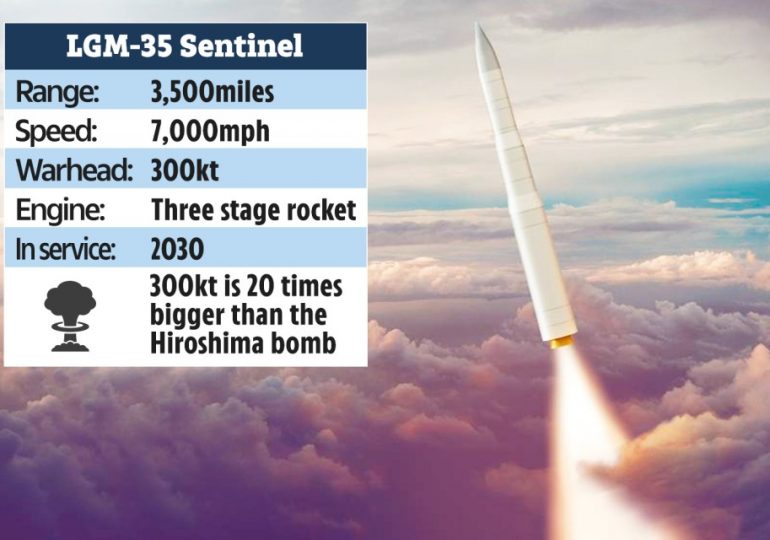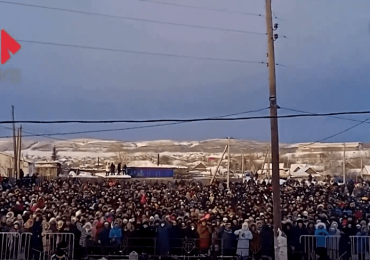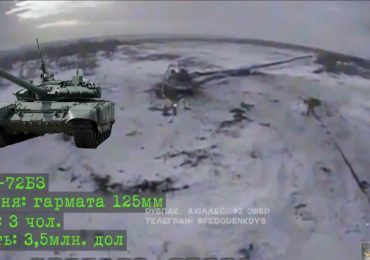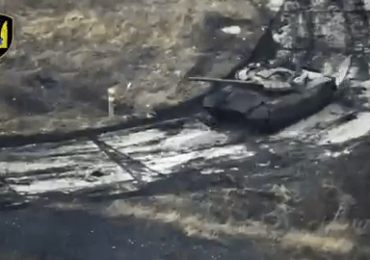THE new terrifying £100billion Sentinel missile is the latest in the USA’s nuclear armoury.
When the hypersonic missile comes into service it will carry a warhead 20 times the size of the bomb dropped on Hiroshima at the end of World War 2.
The facts and figures for the Sentinel
It is still being developed but is expected to replace the Minuteman III missiles which are currently stationed in North Dakota, Wyoming, Montana, and Nebraska from 2029 through 2075.
The LGM-35 Sentinel, which is also known as the Ground Based Strategic Deterrent (GBSD) will be a land based intercontinental ballistic missile (ICBM) system.
Northrop Grumman won the contract worth £10.6bn ($13.3bn) from the Department of the Air Force to develop the weapon after Boeing withdrew its proposal.
The L in LGM stands for silo-launched, G means surface attack while M stands for guided missile, according to the US Air Force.
The US Air Force Nuclear Weapons Center first made a request for development of a next-generation nuclear ICBM in July 2016.
The Minuteman III was first deployed in 1970 and a replacement was needed.
The new missiles are due to be phased in over a 10 year period from the late 2020s are estimated to cost around £210bn ($264bn) over a 50-year life cycle.
The GBSD programme is expected to come into service in 2029 and remain in active service until 2075.
Boeing announced on July 25, 2019 it would not place a bid for the programme, after Northrop bought Orbital ATK, now Northrop Grumman Innovation Systems, Boeing’s supplier of solid rocket motors.
The £10.6bn contract was officially awarded to Northrop Grumman on September 8, 2020.
The Sentinel will carry the W87 Mod 1 (W87-1) thermonuclear warhead, replacing the W78 warhead currently used on the Minuteman III.
Testing of the weapon will mainly take place at Hill Air Force Base, Utah and at Vandenberg Space Force Base (VSFB), California, with missile launches from VSFB over the Pacific Ocean.
Additional testing will be conducted at US Army Dugway Proving Ground, Utah, US Army Garrison–Kwajalein Atoll and within the territorial waters of the Republic of the Marshall Islands.
Supporters, such as the Secretary of Defence Lloyd Austin, of the new weapon say the current ICBMs, first introduced in the 1970s, have had their life extended long enough and need to be replaced.
They also point to China’s ongoing build-up of nuclear weapons and say Russia still poses a threat.
Critics though indicate the new missiles would be not only costly, but also dangerous, increasing the risk of accidentally launching a nuclear war.
Physicist David Wright, former co-director of the UCS Global Security Program believes that submarine-launched ballistic missiles (SLBMs) are just as accurate as land-based missiles, and are “virtually undetectable,” making the ICBMs not only obsolete but also sitting ducks in the states that house ICBMs.
APTwo missile launch officers, or missileers, at a launch control centre at Malmstrom Air Force Base[/caption]
Leave a comment
















